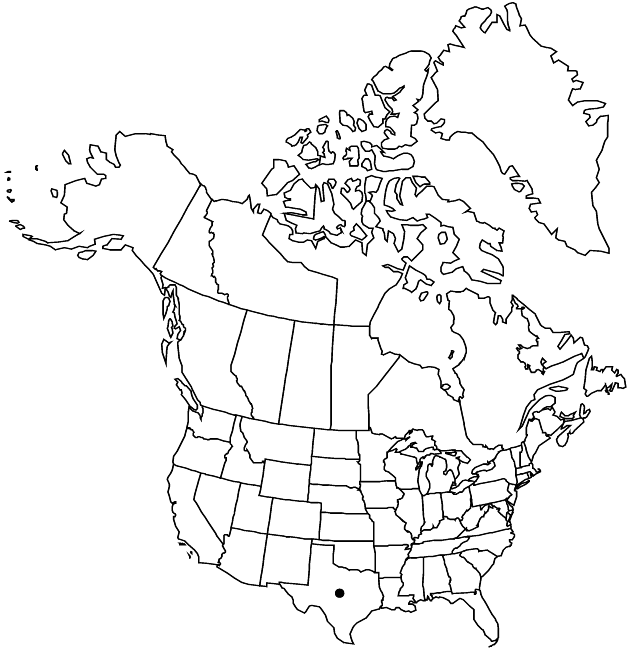Ageratina havanensis
Phytologia 19: 222. 1970.
Common names: Havana snakeroot
Basionym: Eupatorium havanense Kunth inA. von Humboldt et al. Nov. Gen. Sp. 4(fol.): 100. 1818; 4(qto.): 128. 1820
Revision as of 21:59, 29 July 2020 by imported>Volume Importer
Shrubs [trees], (30–) 69–150 (–200) cm. Stems erect (brittle), puberulent to glabrous. Leaves persistent, opposite; petioles 3–10 (–15) mm; blades deltate to broadly ovate or somewhat hastate, (2–) 3–5 (–8) × 2–5 cm, bases truncate to cuneate, margins dentate, apices acute, faces glabrous or nearly so, eglandular. Heads clustered. Peduncles 2–14 mm, minutely puberulent. Involucres 4–6 mm. Phyllaries: apices acute, abaxial faces glabrous or nearly so. Corollas white to slightly pinkish, glabrous. Cypselae hispid. 2n = 34.
Phenology: Flowering mainly (Sep–)Oct–Nov(–Dec), also Apr–Jul.
Habitat: Bluffs, limestone outcrops and slopes, ledges along streams, often in oak-juniper woodlands
Elevation: 100–900 m
Distribution

Tex., Mexico, West Indies (Cuba)
Discussion
Ageratina havanensis apparently is the only species of the genus in the flora area with evergreen-persistent leaves.
Selected References
None.
Lower Taxa
None.
"fine" is not a number.
... more about "Ageratina havanensis"
introrse +
connate +
acute;acute +
scarious +
absent +
hirsute +
papillate +
corymbiform +
continuous +
glabrous +
3(-5)-nerved +
hastate;deltate;broadly ovate +
(4-)5-angled;10-ribbed +
dilated +
stigmatic +
barbellulate +
5;40 +
coarse +
absent +
Havana snakeroot +
not 2-lipped +
glabrous +
monomorphic +
5-ribbed +
hispid +
scabrellous +
straight +
eglandular +
distinct +
proximal +
10;60 +
bisexual +
dispersed +
singly +
Bluffs, limestone outcrops and slopes, ledges along streams, often in oak-juniper woodlands +
discoid +
singly +
clustered +
indeterminate +
homogamous +
surrounding +
campanulate +
petiolate +
opposite +
persistent +
cauline +
dentate +
crenate +
2-carpellate +
inferior +
attached +
anatropous +
persistent +
fragile +
falling +
puberulent +
tough +
thick +
connate +
persistent +
distinct +
equal +
Phytologia +
1970 +
absent +
epaleate +
convex +
fibrous +
exalbuminous +
modifed +
1;2 +
alternate +
branched +
scandent +
erect +
2-branched +
hirsutulous +
papillate +
Ageratina havanensis +
Ageratina +
species +
perennial +